2022 Week 7: Youth and Education
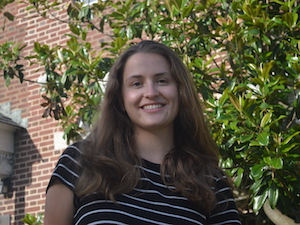 Hélène Girard | Village Learning Place
Hélène Girard | Village Learning Place
My placement collaborated with the 29th Street Community Center for orientation. Our missions as organizations are very similar, but 29th Street is more recent as a nonprofit, so they were still in the process of figuring out their structure for the children’s summer program. It made me realize how difficult it is to start and build up momentum on a community-based nonprofit, especially one that requires as much community engagement as a youth’s summer program.
The real intersection between my placement and other placement areas, however, is in the enrichments for the children. Art With a Heart and Code in the Schools are just the ones that CIIP is affiliated with, but VLP partners with many nonprofits for all their enrichment offerings. The kids appreciate those hours most of all.
It’s sometimes surprising to see the things the kids take to heart. I remember a few weeks ago that one of the girls who usually gets bored pretty quickly told me as we were walking to recess that she wanted to go into coding and IT as a profession. I think being able to create whatever she wanted with the scratch block coding appealed to her sense of creativity. I asked her why and she told me that it paid well. I told her that you could also work from home and that seemed to appeal to her as well. I hope that she goes through with it and finds joy in tech. It seems like the kind of “Wild West” industry that could start generational wealth in a family. It sounds superficial to concentrate on financials with careers, but it has a strong purpose. Generational wealth to me is a spectrum from middle to high incomes, but they all share stability, which makes it possible to venture out and try new things. Trees can bend some pretty extreme ways if the roots are strong. That metaphor can extend two ways. Strong root systems and flexible stems are the way that palm trees survive hurricanes, and those same qualities are what allow young germinations to seek out better sunlight.
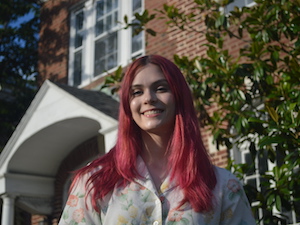 Helen Lacey | Dent Education
Helen Lacey | Dent Education
In terms of intersectionality, I think it’s been interesting to see how issues with summer meal delivery have blossomed into relationships with other organizations throughout the city. Because my placement works with high schoolers, we receive free meals through the city. Students often choose not to eat the meals which means a lot of food could be wasted. While most sites have reduced their lunch order to better accommodate student needs, there are still days when no students eat lunch and it’s the job of staff to either come up with a place to donate the food or throw it away. When this happens, our sites often donate to a local community fridge in Greenmount west. We’ve also had a site consistently donating their leftovers to MOMCares, which has been great to see because I probably wouldn’t have known that they were accepting food donations had it not been for Dumebi posting about it in the CIIP group chat.
Aside from the food donation intersections, I think it’s important that Dent emphasizes building their “activated network.” They invite guest speakers and different hosts/clients/partners from organizations across the city to come in and work with students. Their presence in the Dent community helps students realize that the ideas they have within the Dent space can continue to be actualized even once the program is over. For instance, I already know of one student in the Denternship track who will be continuing to work with their client throughout the academic year. Next week we will be having our final showcase, and it will be great to see the activated network that’s been built throughout the summer come into action in real life. I hope to see lots of different community members there to support Denters.
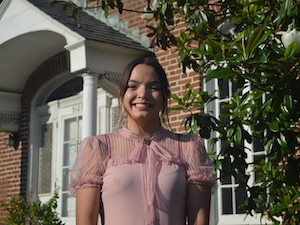 Mahalia Munalem | Hampden Family Center
Mahalia Munalem | Hampden Family Center
Although my placement at the Hampden Family Center was focused on Youth and Education, I frequently experienced intersectionality with food access and community organizing which has impacted the work I have done and increased the insights I have gained. For example, one of the enrichment activities we had planned during the 3rd week of programming was called TasteWise Kids. During TasteWise, the campers would learn about nutrition, farming, etc. and create crafts out of food like fruit monster masterpieces they would get to eat after showing off to their instructor. Although some of the kids complained about TasteWise because they “didn’t want to learn about food” or “already know this stuff” it was good to see them gain an enriching experience where they could gain deeper knowledge about growing your own food, and what foods are good for you & why. With that being said, it was a bit disappointing to see some of the meals –both breakfast and lunch– that were provided by the city of Baltimore and the dilemmas that they caused in the cafeteria. Breakfasts were always a grain like cereal, french toast, or donuts, along with a fruit cup of some kind and white or chocolate milk. Most morning the kids liked their options enough to eat them, but during breakfast the problem was making sure they weren’t eating too much and grabbing 3rd or 4th helpings as it might not be the healthiest for them and we wouldn’t have enough to serve for everyone to get as much as they wanted. During lunch we had the opposite problem. Most of the lunches were “too gross” or the kids would only pick and choose certain things to eat –definitely not the bagged cauliflower! Luckily, as a neighborhood center, uneaten and unopened food items could be distributed to unhoused individuals but it was painful to see some participants impatience with sorting through their food and just throwing the rest away or having some participants want to sneak a snack from the kitchen which are really snacks for clients of the center.
On another note, if there are any placements that are looking to provide enriching after school programming to 7-12 year olds in any capacity let me know and I can get you in contact with HFC’s program manager!
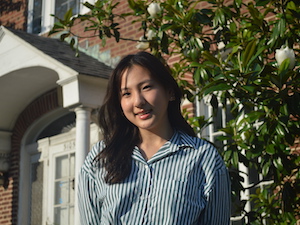 Sophia Park | Child First Authority at Calvin Rodwell Elementary/ Middle School
Sophia Park | Child First Authority at Calvin Rodwell Elementary/ Middle School
This week, I took on a wide variety of different roles. On one day, I would be a teacher, putting together last minute lesson plans and interacting with multiple students at a time. The next day, I would be a teaching assistant, coming up with fun activities to do during activity time, and working individually with multiple students. Some days, I did not even step foot into a classroom and assumed an administrative role, answering parent phone calls and making countless announcements over the PA system. If I were to be told before this internship that I was going to be dealing with all of these diverse roles, I think I would have been terrified. I am a type of person who likes having a routine, and coming into work, not already knowing what I was to do for the day is the polar opposite. However, I have grown to appreciate this spontaneity. I feel extremely appreciated by my supervisors, as they always express their gratitude at my willingness to step into any empty position that day. I also feel immensely thankful for their patience and guidance, as they always ask me how I am doing and ensure I put my mental health and wellbeing before any work. The CTY program that we have been coordinating has been fairly successful thus far, and it makes me realize the power of opportunity. For these students, they are attending tuition-free, and are receiving free meals at school. This program gives them the opportunity to learn advanced curricula they would not have access to during their typical school-year. These students are incredibly bright and I can see their eyes light up when they finally understand a certain concept or conduct an experiment. I am sad that next week is my last week, as I have thoroughly loved being able to help create such a great experience for these kids.
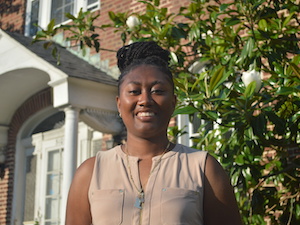 Abigail Quashie | St. Francis Neighborhood Center
Abigail Quashie | St. Francis Neighborhood Center
During training for this internship, one of the things we discussed is how intertwined the different Baltimore communities and partners are. These past couple of weeks of being at the center plus planning service-learning lessons has shown me just how true that is.
For example, the 3rd and 4th graders have been learning about food insecurity and sustainability. I have done activities with them, told a few stories, and watched some videos about access to healthy food and what actions they can take in their personal lives toward a sustainable future. I think, though, that the most meaningful experiences for them have been when they take field trips to the farms and experience in a hands-on way. This week they told me about how they visited Drew Family Farm and bough seeds to plant, put down cardboard to prevent weeds, picked ripe vegetables, composted, and learned about water conservation. Then two weeks before that, they took a trip to Whitelock Community Farm, another community partner, and made planters while also talking about vermiculture. By collaborating with the nearby farms, the center can create opportunities for the students that make the content more tangible and memorable. And the center collaborates with more community partners outside of the service-learning like inviting Art with a Heart and Peace Players to do their lessons for the kids at the summer camp.
Observing the center and how it interacts with the neighborhoods it serves, and other community partners and nonprofits have just illuminated for me how essential collaboration is to support a community. When everyone has their niche, then it makes sense to work together and meet at the intersections. And that is a reality for any and every community, not just the 21217.
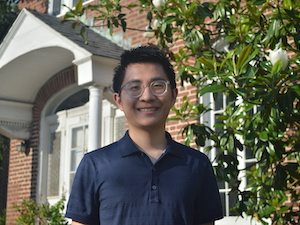 Ethan Wang | Code in the Schools
Ethan Wang | Code in the Schools
At CodeWorks, I have met with many talented youth, both virtual and in-person. After being in this program for several weeks, I can see how one’s race, class, and gender can overlap to form barriers. More specifically, one’s residence in Baltimore, economic situation, family situation, school, whether or not they are in a CTE pathway, access to computers, access to certain programs on those computers. All these different factors can play into their ability to succeed, or even participate, in our program. However, our program does try to mitigate these barriers in ways like providing computers to those who need it.
This week, I have been working on resolving payroll issues with Youthworks. There was one youth that was placed in the wrong program, but the other placement was able to work with us to remedy the situation. I’m excited, seeing everyone in the last stretch and preparing for the final showcase.
I see a lot of potential for collaboration between Code in the Schools and others. Code in the Schools can work with other youth-centered organizations to target younger students, not just middle and high schoolers. This way, CodeWorkers can interest anyone in computer science or even letting elementary school students know that this pathway in the digital world exists for them.
At the BITES session, we saw many different graffiti art and murals, from artists not from and from Baltimore. Seeing these different interpretations of Baltimore, tanged with my own interpretations, was a nice call-back to all the topics, beautiful or negative, that we learned about Baltimore.
